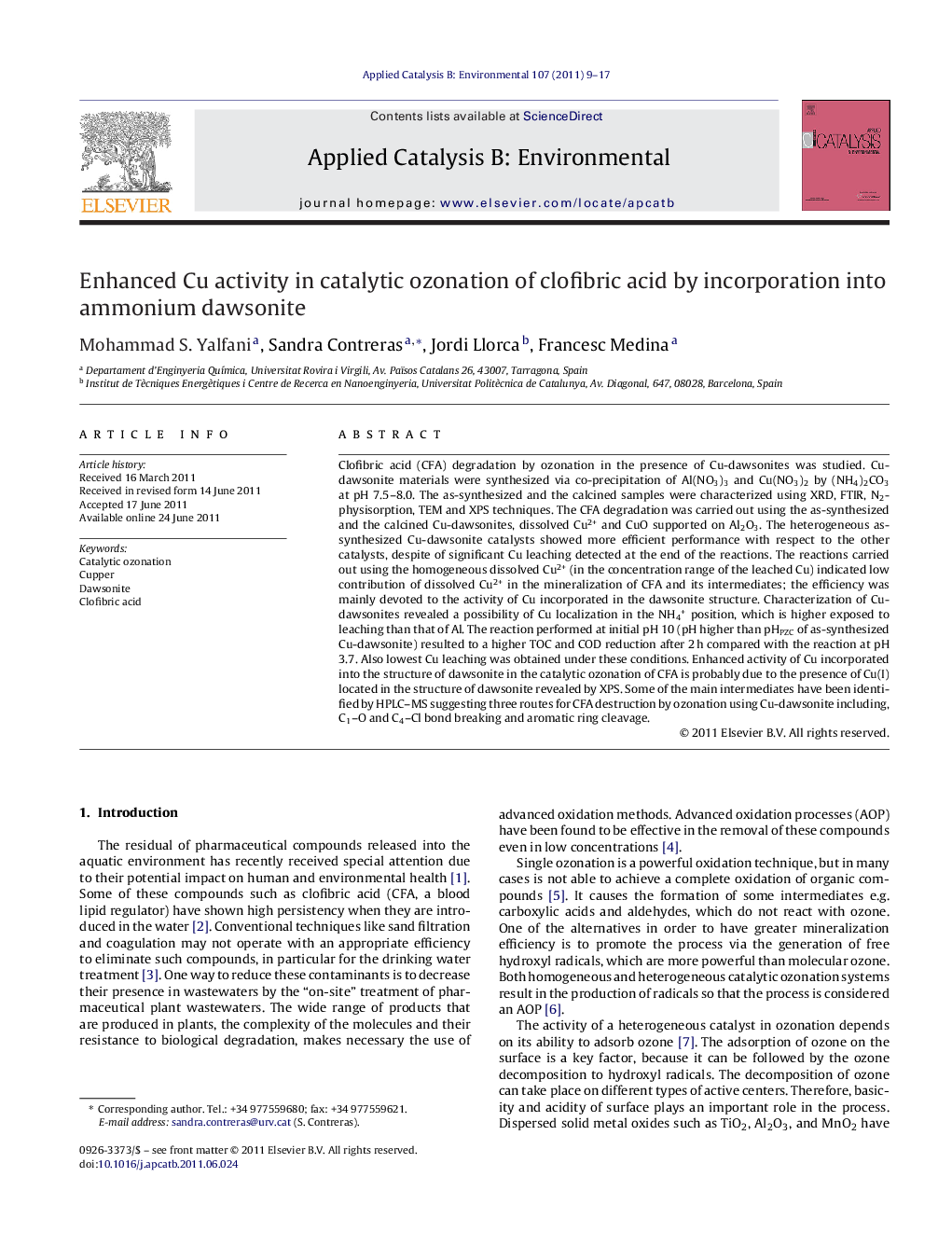| کد مقاله | کد نشریه | سال انتشار | مقاله انگلیسی | نسخه تمام متن |
|---|---|---|---|---|
| 46716 | 46446 | 2011 | 9 صفحه PDF | دانلود رایگان |

Clofibric acid (CFA) degradation by ozonation in the presence of Cu-dawsonites was studied. Cu-dawsonite materials were synthesized via co-precipitation of Al(NO3)3 and Cu(NO3)2 by (NH4)2CO3 at pH 7.5–8.0. The as-synthesized and the calcined samples were characterized using XRD, FTIR, N2-physisorption, TEM and XPS techniques. The CFA degradation was carried out using the as-synthesized and the calcined Cu-dawsonites, dissolved Cu2+ and CuO supported on Al2O3. The heterogeneous as-synthesized Cu-dawsonite catalysts showed more efficient performance with respect to the other catalysts, despite of significant Cu leaching detected at the end of the reactions. The reactions carried out using the homogeneous dissolved Cu2+ (in the concentration range of the leached Cu) indicated low contribution of dissolved Cu2+ in the mineralization of CFA and its intermediates; the efficiency was mainly devoted to the activity of Cu incorporated in the dawsonite structure. Characterization of Cu-dawsonites revealed a possibility of Cu localization in the NH4+ position, which is higher exposed to leaching than that of Al. The reaction performed at initial pH 10 (pH higher than pHPZC of as-synthesized Cu-dawsonite) resulted to a higher TOC and COD reduction after 2 h compared with the reaction at pH 3.7. Also lowest Cu leaching was obtained under these conditions. Enhanced activity of Cu incorporated into the structure of dawsonite in the catalytic ozonation of CFA is probably due to the presence of Cu(I) located in the structure of dawsonite revealed by XPS. Some of the main intermediates have been identified by HPLC–MS suggesting three routes for CFA destruction by ozonation using Cu-dawsonite including, C1–O and C4–Cl bond breaking and aromatic ring cleavage.
Figure optionsDownload as PowerPoint slideHighlights
• Dawsonite-incorporated Cu presents high activity in catalytic ozonation.
• The contribution of dissolved Cu2+ in ozonation is not significant.
• Cu appears as Cu(I) within the structure of ammonium dawsonite.
• The reaction at initial pH 10 results to highest efficiency and lowest Cu loss.
Journal: Applied Catalysis B: Environmental - Volume 107, Issues 1–2, 31 August 2011, Pages 9–17